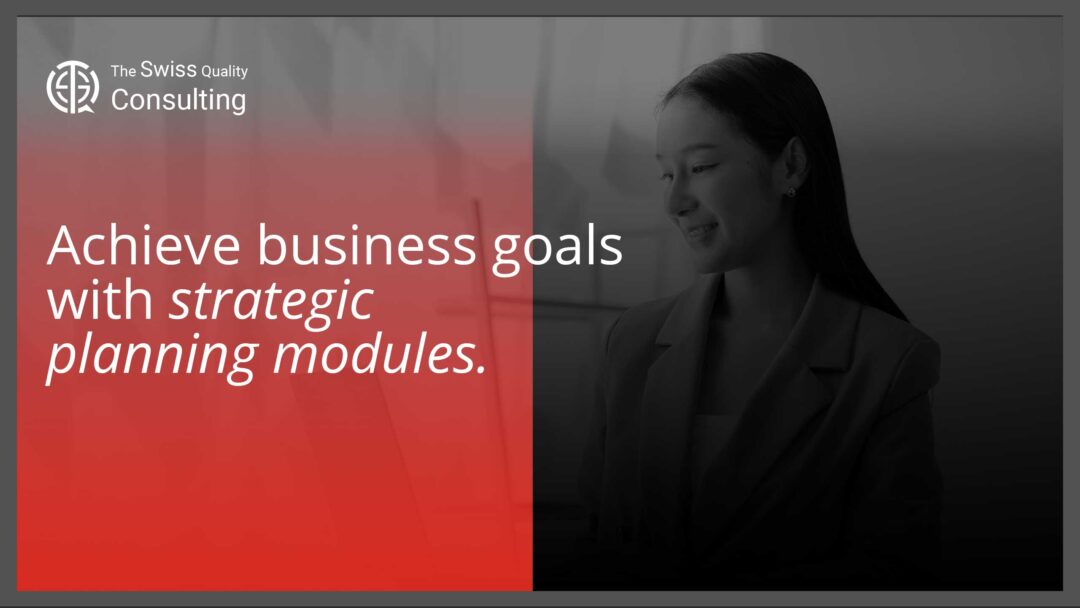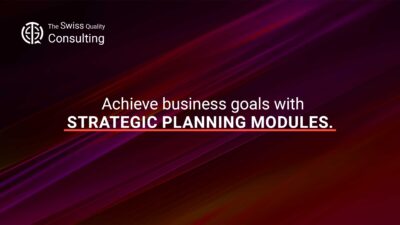Unlocking Success through Strategic Vision and Leadership Development
In the ever-evolving landscape of business, the pursuit of excellence is an ongoing journey. Business executives, mid-level managers, and entrepreneurs recognize that achieving their goals requires a strategic vision, effective change management, and leadership development. To excel in this dynamic environment, it’s crucial to master strategic planning, leverage change management principles, and harness the power of executive coaching. This article explores the interplay between these strategies and how they contribute to business success and growth.
The Power of Strategic Planning
Strategic planning is the compass that guides an organization toward its desired future state. It involves setting clear objectives, identifying opportunities, and defining the roadmap to achieve business goals. An effective strategic plan provides a sense of direction, helps allocate resources efficiently, and allows for adaptability in a changing business landscape.
Key Elements of Strategic Planning
1. Vision Statement: The vision statement defines the long-term aspirations and purpose of the organization, providing a clear sense of where the company is headed.
2. Mission Statement: The mission statement outlines the organization’s core purpose and the value it brings to its stakeholders.
3. SWOT Analysis: Conducting a SWOT (Strengths, Weaknesses, Opportunities, Threats) analysis helps identify internal strengths and weaknesses as well as external opportunities and threats.
4. Goals and Objectives: Clearly define specific, measurable, achievable, relevant, and time-bound (SMART) goals and objectives.
5. Action Plans: Develop action plans that detail the steps, responsibilities, and timelines required to achieve the defined objectives.
6. Performance Metrics: Establish key performance indicators (KPIs) to track progress and measure success.
The Essence of Change Management
Change management is a structured approach to navigate organizational change effectively. In a business environment where change is constant, understanding how to manage and lead through change is critical for success.
Principles of Effective Change Management
1. Leadership Commitment: Leaders must demonstrate commitment to change and communicate its importance to the organization.
2. Stakeholder Engagement: Engage all stakeholders in the change process, providing opportunities for input and feedback.
3. Clear Communication: Communicate the reasons for change, the expected outcomes, and the role of each stakeholder in the process.
4. Change Champions: Appoint change champions or advocates who can drive the change at various levels of the organization.
5. Training and Development: Provide training and resources to equip employees with the skills and knowledge needed to adapt to the changes.
The Impact of Executive Coaching
Executive coaching is a transformative process that enhances leadership skills and fosters personal and professional growth. It provides a structured framework for leaders to reflect on their abilities, set goals, and develop strategies to excel in their roles.
Benefits of Executive Coaching
1. Enhanced Leadership Skills: Executive coaching helps leaders develop the skills and confidence needed to lead effectively through change.
2. Improved Communication: Effective communication is crucial during times of change. Coaching can refine communication skills, ensuring leaders can convey their vision clearly.
3. Conflict Resolution: Change often brings conflicts. Coaches equip leaders with tools to manage conflicts constructively, minimizing disruptions.
4. Adaptability: Leaders learn to embrace change and enhance their adaptability in response to evolving circumstances.
5. Strategic Thinking: Coaches encourage leaders to think strategically, enabling them to anticipate challenges and opportunities.
The Synergy of Strategic Planning, Change Management, and Executive Coaching
The integration of strategic planning, change management, and executive coaching creates a powerful synergy that drives business success. Here’s how these elements work in harmony:
1. Strategic Planning and Change Management: A well-structured strategic plan includes change management considerations, ensuring that the organization is prepared for change while pursuing its goals.
2. Executive Coaching and Change Management: Executive coaching equips leaders with the skills and mindset needed to lead change initiatives effectively. Coached leaders are better prepared to guide their teams through change.
3. Strategic Planning and Executive Coaching: Executive coaching can be aligned with the strategic goals of the organization, ensuring that leadership development is in sync with the business’s long-term vision.
Effective Communication: The Linchpin of Change Management
Effective communication plays a pivotal role in change management. Clear and transparent communication fosters understanding, reduces resistance, and promotes buy-in among stakeholders.
1. Clear and Transparent Messaging: Ensure that your communication is clear, concise, and transparent. Articulate the reasons for change, the expected outcomes, and the role of each stakeholder.
2. Two-way Communication: Encourage feedback and open dialogue. Actively listen to concerns and address them promptly. This fosters a sense of ownership and engagement among stakeholders.
3. Consistent Messaging: Consistency in messaging is crucial. Ensure that all communications, whether written or verbal, convey a consistent narrative about the change.
4. Use of Technology: Leverage technology for communication, such as interactive dashboards and collaboration tools, to facilitate transparency and information sharing.
Investing in Leadership Development
Leadership development is an investment in the future success of the organization. It’s a commitment to nurturing talent, fostering growth, and building a resilient leadership team capable of guiding the organization through change.
1. Customized Programs: Tailor leadership development programs to address the specific needs and challenges of your organization.
2. Continuous Learning: Encourage leaders to engage in continuous learning and self-improvement to stay relevant in a rapidly changing business environment.
3. Mentorship and Coaching: Provide opportunities for mentorship and coaching to foster the development of emerging leaders.
4. Measuring Success: Establish metrics to measure the impact of leadership development programs, ensuring that they align with organizational goals.
Conclusion: Navigating Change
for Business Excellence
In conclusion, the alignment of strategic planning, change management, and executive coaching creates a harmonious path toward business excellence. By setting clear objectives, effectively managing change, and nurturing leadership skills, organizations can navigate change successfully and achieve their goals.
#StrategicPlanning #ChangeManagement #ExecutiveCoaching #BusinessSuccess #LeadershipDevelopment #Synergy























